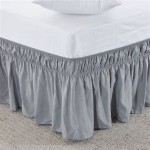Queen Bed Bug Pictures: Identifying an Infestation
Bed bugs are small, wingless insects that feed on the blood of humans and animals. Identifying them early is crucial for effective treatment. This article provides detailed information about queen bed bugs, specifically focusing on visual identification through pictures.
The term "queen bed bug" is a misnomer. There is no distinct queen caste in bed bug colonies like there is with ants or bees. All female bed bugs capable of reproduction are essentially equal. The term likely arises from the larger size of engorged female bed bugs after a blood meal, leading to the mistaken belief that they are a separate "queen" type.
Understanding the different life stages and characteristics of bed bugs is essential for proper identification. Adult bed bugs are roughly the size and shape of an apple seed, approximately 5-7 mm long. They are reddish-brown, flat, and oval-shaped before feeding. After feeding, they become engorged with blood, appearing darker in color and more elongated.
Pictures of bed bugs can be invaluable tools for identification. High-quality images allow individuals to compare suspected insects with confirmed bed bugs. Searching online for "bed bug pictures" will yield numerous examples. Pay attention to the shape, size, and color in the pictures. Look for the flattened, oval body and the characteristic reddish-brown hue.
Examining images of bed bug nymphs is also helpful. Nymphs are smaller than adults and translucent or yellowish-white in color. After feeding, they take on a brighter red appearance due to the ingested blood. Pictures showing the various nymphal stages can assist in differentiating them from other small insects.
Beyond pictures of the insects themselves, images of bed bug evidence can be crucial in identifying an infestation. These signs include dark fecal spots on mattresses, bedding, and surrounding furniture. These spots are often described as resembling small ink marks. Pictures of these markings can aid in distinguishing them from other types of stains.
Another visual indicator is the presence of shed exoskeletons. Bed bugs shed their skins as they grow through the nymphal stages. These discarded exoskeletons are translucent and often found near bed bug harborage areas. Pictures of these exoskeletons, often described as resembling the bugs themselves but hollow, can confirm a bed bug presence.
It's important to note that while pictures can be a useful starting point, they are not a substitute for professional identification. If you suspect a bed bug infestation, contacting a qualified pest control professional is crucial. They can perform a thorough inspection and confirm the presence of bed bugs.
When searching for bed bug pictures online, focus on reliable sources. Images from reputable pest control websites, universities, and governmental agencies are more likely to be accurate. Be wary of user-submitted photos on forums or social media, as misidentification is possible.
Comparing pictures from multiple sources can also increase the accuracy of identification. Look for consistent characteristics across various images. This helps to build a more complete understanding of bed bug morphology and avoid misidentification with similar-looking insects.
Pictures of bed bug bites can sometimes be helpful, but they are not always reliable indicators of an infestation. Bed bug bites often resemble other insect bites, such as mosquito bites or hives. Furthermore, not everyone reacts to bed bug bites in the same way. Some individuals show no reaction at all, while others experience significant itching and welts.
Therefore, relying solely on pictures of bites is not recommended. Instead, focus on pictures of the insects themselves and the physical evidence they leave behind, such as fecal spots and shed exoskeletons. These are more reliable indicators of an infestation.
When using pictures to identify bed bugs, pay close attention to the details. Observe the shape of the body, the number of legs, and the presence of antennae. Compare the size of the suspected insect to the size references provided in the images. These details can help distinguish bed bugs from other household pests.
Ultimately, using queen bed bug pictures, and more accurately, pictures of all bed bug life stages and evidence, can be a helpful tool in identifying an infestation. Combined with a thorough inspection by a pest control professional, visual identification can lead to early detection and effective treatment of these persistent pests.

1 000s Of Bedbugs Found In Apartment Regina Couple Evicted Cbc News

Sleep Safe Zipcover Bed Bug Allergy And Waterproof Queen Mattress Zip Cover E17 6080 The Home Depot

Tropical Bed Bugs Found In Florida After 60 Year Absence

Bed Bugs May Already Be In Your Home Here S How To Check For Them Daily Mail

Identify Bed Bugs How They Start Where Come From

Do Bed Bugs Have Queen The Pestpedia

3 Signs Of Bed Bugs And Where To Look

Bed Bug Bites Signs Of Include Blood Spots How To Get Rid Infestation Express Co

9 Tips To Keep Your Mattress Safe From Bed Bugs And Prevent A Bug

Bug Lock Queen Bed Mattress Base And 2x Pillow Cases Complete Set
Related Posts







